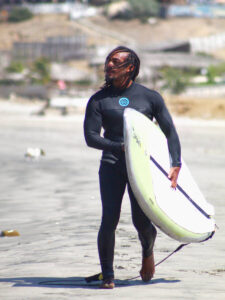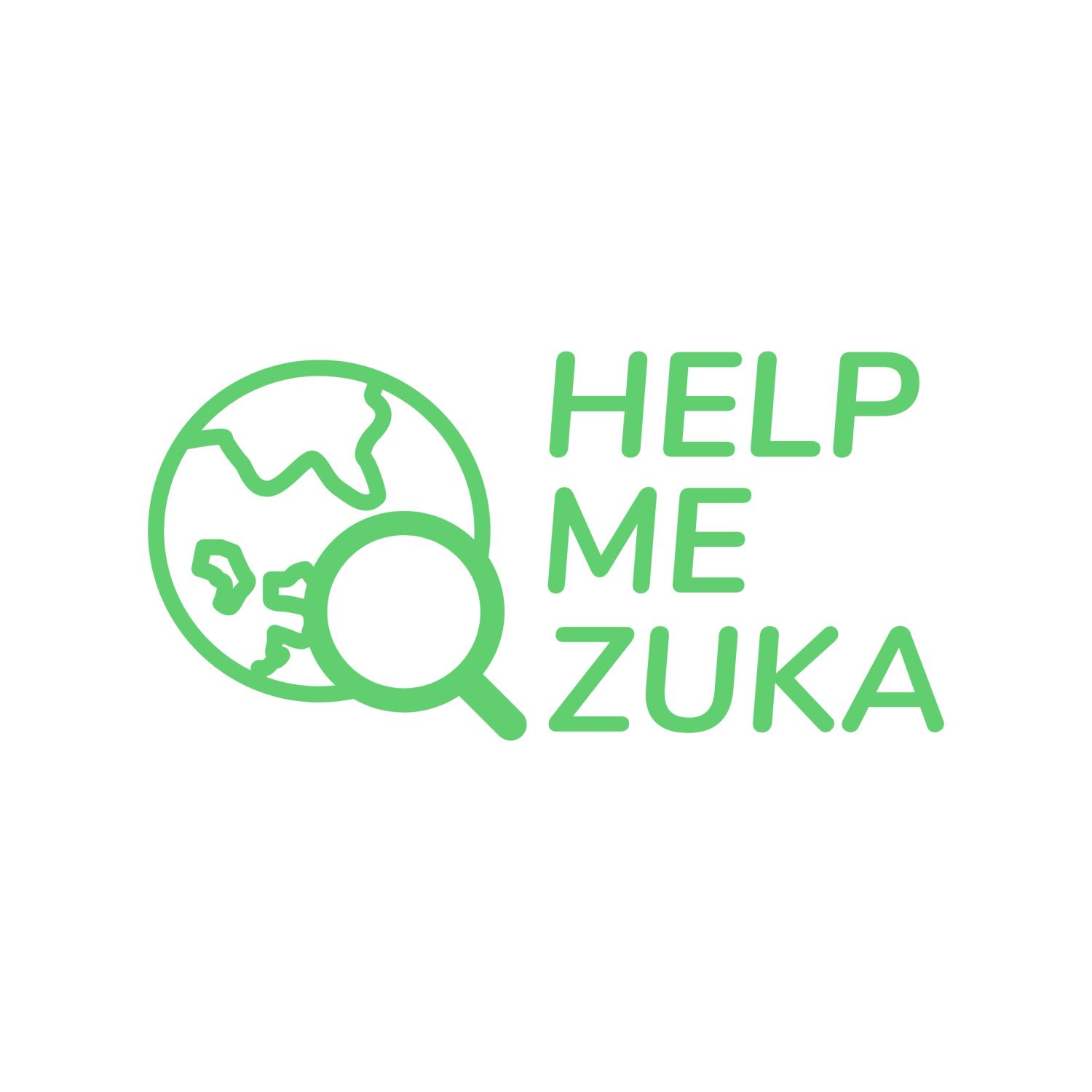Sandwiched between French Guyana and Guyana, Suriname is one of the least visited countries in the world. When I visited Suriname for the first time, I knew nothing about it except that it used to be a Dutch colony. After spending three weeks in Suriname, the interesting facts I learned during my stay will help you better prepare for your trip.
Suriname is a beautiful country with wild, untouched nature and diverse, well-conserved, and intact cultures. During my stay, I traveled to different regions and learned a lot about how things are done in the country.
I recommend anyone visit this country. However, I faced some issues that could have been avoided if I had known about these facts upfront.
Well, it happens with all travelers from time to time. Don’t worry; this time, I am here to help you.
Table of Contents
1. Have always enough cash with you
Not having cash was the first and hardest lesson I learned upon arriving at Johan Adolf Pengel International Airport. I had no money (yes, I know, a rooky mistake), and the only ATM at the airport didn’t accept my bank cards! Having no other choice, I jumped into one of the taxis waiting there, hoping another ATM on the way would work for me. And luckily, it did. When I reached Paramaribo, the taxi driver drove me to the Republic Bank, where I could withdraw cash and pay him.
It turned out that complications with money would continue during my time in Suriname.
Card payment is not a thing in Suriname. Only a few places accept cards, even in Paramaribo, so forget about trying to pay by card outside the capital. The only option you’ll have is cash. Another problem is that many ATMs are out of service, mainly at the beginning of the month. Many people withdraw their paychecks during this period to buy something.
I often needed money, but one ATM after another was out of service. I also found myself in a situation where not all ATMs accepted my bank cards. Of all the banks and ATMs I tried, Republic Bank Suriname was never an issue for me.
The lack of ATMs is even more of a problem outside of Paramaribo. In some places, you can’t find them on Google Maps. Sure, you can always ask locals, but if you urgently need money, wandering around is the last thing you want to do, so always have cash.
If you want to refrain from withdrawing money to pay for your accommodation or tours constantly, you book via a tour agency and ask if you can make an online payment via Wise. I have done this a couple of times and saved some transaction fees.
As a practical tip part of the interesting facts about Suriname, I recommend you to have at least 5,000 SRD on hand.
2. Watch out for poisonous animals
Suriname is 93% covered by rainforest. Being officially the greenest country on the planet, it’s no wonder its flora and fauna are among the most diverse in the world. Consequently, the country has diverse wildlife, including poisonous spiders and snakes.
In Paramaribo, you don’t need to be careful, but as soon as you step out of the capital city, you should pay attention to avoid having a too-close encounter with some of these creatures.
I always stayed on trails and avoided bush-bashing when hiking in National parks. When you sleep outside urban areas, look under your pillow and bed sheets before bed. Shake off your shoes and clothes before putting them on.
Mosquitos transmit many dangerous diseases, so make sure to apply repellent.
While staying in a resort far deep in the jungle, I discovered a tarantula living on my balcony and another in my shared kitchen area. I am not sure how or if the spiders were poisonous, but it is an animal I don’t wish to get too close to find out.
3. Dutch is the way to go
Being located in South America, many think that Spanish is the official language of Suriname. They are wrong; it’s Dutch; Suriname is the only country in South America where Dutch is the official language.
If you know basic Dutch, then that would be good for you. I’ve had the experience of Surinamese people mastering multiple languages. Therefore, many people speak English and have a basic understanding of Spanish and Portuguese. Surinamese children learn Spanish in school, and due to the big Brazilian community in Suriname, you can also use Portuguese in Suriname.
While you’ll get the furthest with Dutch (all street signs are in Dutch), I’ve had the experience that in remote areas, people didn’t speak Dutch, only their local language. Surinameses speak more than ten languages: variants of Chinese, Hindi, Javanese, and Creole, to name just a few. Sranan Tongo, an English-based Creole language, is the lingua franca.
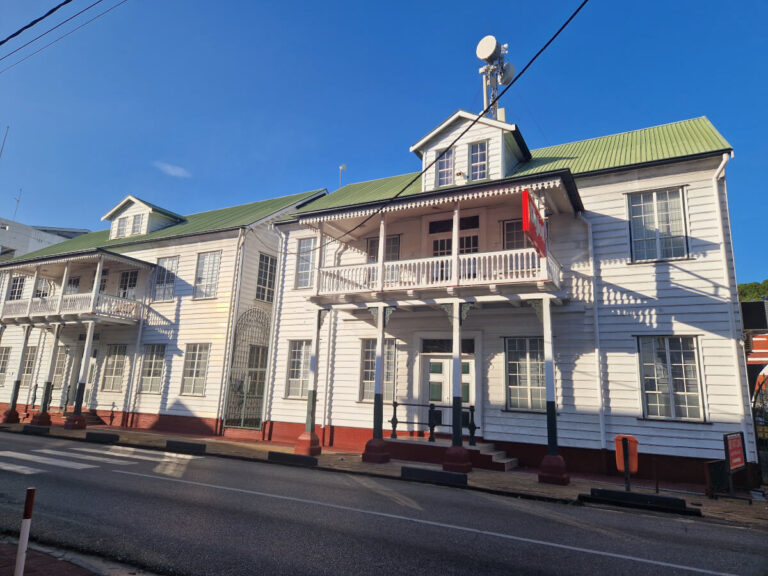
4. Travel inland
Don’t make the mistake of visiting Suriname and only staying in Paramaribo and the coastline. You need to travel inland, where your adventurous heart will beat louder. Inland, you can explore the jungle and its inhabitants in their natural habitat, visit authentic Maroon villages, go on hiking trips in one of the national parks, chase waterfalls, and admire all the beauty of nature in Suriname.
While I learned much about life on the plantations in and around Paramaribo, a trip to the inland completed the picture. Following the path of formerly escaped enslaved people up the Suriname River deep into the jungle, I saw another geographical area of Suriname and a completely different culture and way of life in one of the Maroon villages.
The further up the river you travel, the more authentic villages you will encounter. The Maroon people have nearly completely preserved their African traditions. This preservation of culture is one of the many interesting facts about Suriname that will undoubtedly enrich your travel experience.
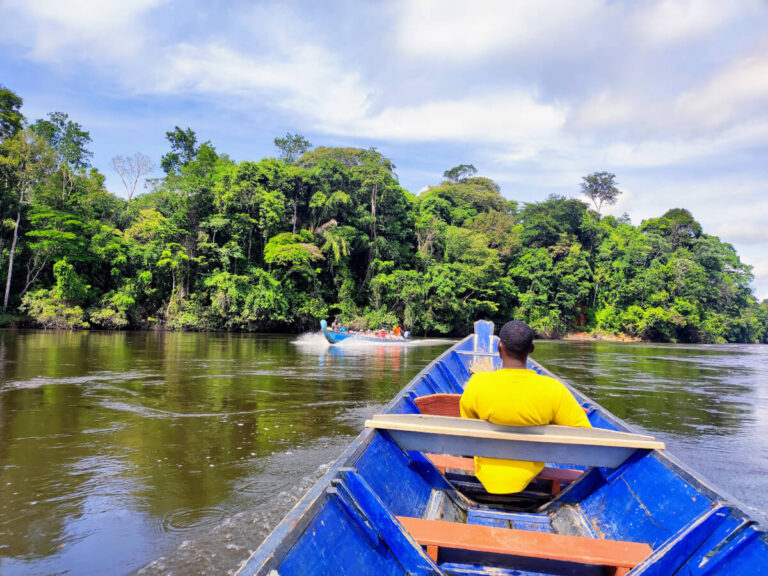
Thinking about flying to Suriname? Check flight options on Kiwi, it's my favorite way to book plane tickets:
5. You can always negotiate prices
As a rule, you will be charged more for any service you need because you are a tourist. Suriname is not an exception in the world, and I am not against paying more as a tourist, but I wouldn’t say I like to spend an unfair amount either.
You need to know that prices are usually not indicated. To learn a typical price, you should speak to locals to find out what they would pay. At least this will give you an indication. For example, before entering a taxi, ask the host of your guesthouse or hostel what the regular price is for the distance.
Never use a service and ask for the price afterward. It is a recipe for disaster. Drivers won’t charge you the average price but something completely absurd. Avoid the stress and agree upon a price upfront.
Any service provider will tell you a much higher fee than they would ask from locals. That’s why I have always negotiated the price. For instance, when they charged 600 SRD for a boat ride, I asked for 500 SRD. In all cases, they say yes. Don’t feel shy about negotiating the price. As there is no price indication, you’re expected to negotiate if you don’t want to be overcharged.
6. It's safe to visit
Suriname is considered one of the safest countries to visit in South America. And that’s how I’ve felt during my entire stay in the country.
People are warm, open, and hospitable. Paramaribo is a quiet city. However, I always paid attention to my surroundings and the people around me. I avoided deserted streets and didn’t go out for a walk late in the evening.
Why did I do this if I felt so safe? I like to be more careful in whichever new place I go. Not having friends and family close by and not knowing how things work in a foreign country automatically makes you more vulnerable. Apply your common sense, but you don’t need to exercise extreme precaution.
The balance between awareness and enjoyment is vital to learning the interesting facts Suriname has to offer.
7. Incredible wildlife
The Surinamese population is just over 500,000, and with 93% of the country covered by rainforest, Suriname’s wildlife is one of the most diverse in the world.
Because the country is not densely populated, much of the nature is unspoiled. The Surinamese government has set aside a large percentage of the country for national parks and wildlife preserves. Spotting wildlife in Suriname is, therefore, easy.
Jaguars, dolphins, sea turtles, monkeys, and sloths can be seen. If you are a fan of wildlife, then you need to check out the Central Suriname Nature Reserve, a UNESCO World Heritage Site covering 11% of the country’s territory.
8. The huge ethical mix
One of the first things I did when we arrived in Paramaribo was to visit the central market. I was so surprised by all the diversity I saw. One of Paramaribo’s striking features is its diverse population, a testament to Suriname’s multicultural heritage.
One of the most interesting facts about Suriname was that the people of various ethnic backgrounds, including East Indian, Javanese, African, and Amerindian, coexist harmoniously, creating a fascinating cultural mix.
I could have never imagined such vast diversity in such a small country. This fact increased my curiosity to explore and understand more about these different backgrounds.
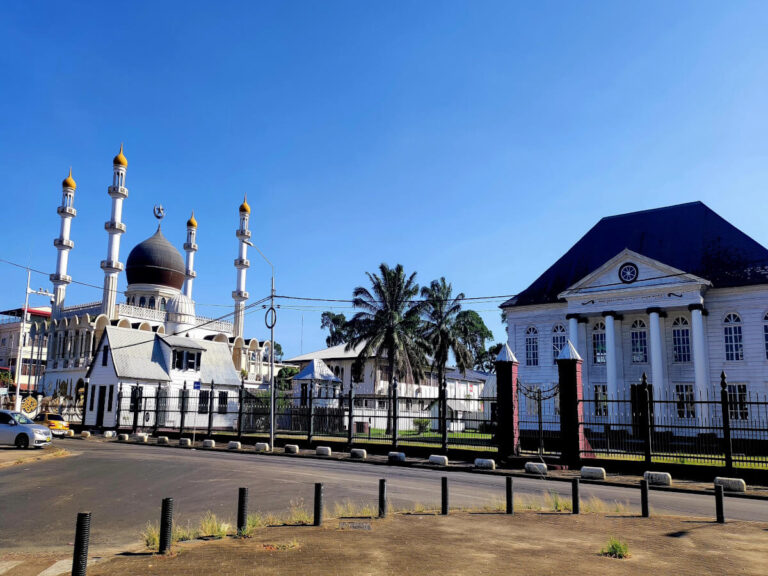
9. You need a yellow fever certificate
To enter Suriname, you need a Yellow Fever Certificate. The police will check the certificate when you enter and exit the country. Officially, you must have it with you at all times and provide it upon request.
10. You need to pay an entry fee before visiting
I wish someone had told me this information before my trip. This fact is an essential part of the interesting facts about Suriname to ensure a smooth travel experience. Not being aware of this on time nearly made it impossible for me to enter Suriname.
Every tourist must complete a registration form and pay 35€ BEFORE ENTERING Suriname. When you check in at the airport, you need to have the confirmation email with the QR code in your inbox; otherwise, they won’t let you depart.
The registration form is straightforward, but my payment didn’t go through for some reason, and the application status on the website was indicated as pending.
So I just went to the airport, thinking the email with the necessary QR code would soon arrive. A random gentleman who knew the application process by heart said the payment didn’t go through and that I had to renew the registration.
This meant that I had to restart the registration process with another email address and make the payment again.
I was lucky to have received the confirmation email within 30 minutes, as I heard later from other tourists that receiving the QR code took them five days.
I was lucky, but what a stressful situation!
11. You can do things without a tour agency
When I arrived in Suriname, the most confusing thing for me was understanding which activities needed a tour agency and which activities I could do myself.
Most information about what to do in Suriname is provided by tour agencies or travel bloggers who write about their experiences with a tour agency, so there is little available on how to travel the country independently.
Generally, little information is available online, such as bus schedules and details about accommodation prices.
Also, when you arrive at your guesthouse or hotel, you will see all the brochures offering different tours, so my first thought was that this was the only way to do things in Suriname. But it isn’t; some of the attractions you can do by yourself and save some money.
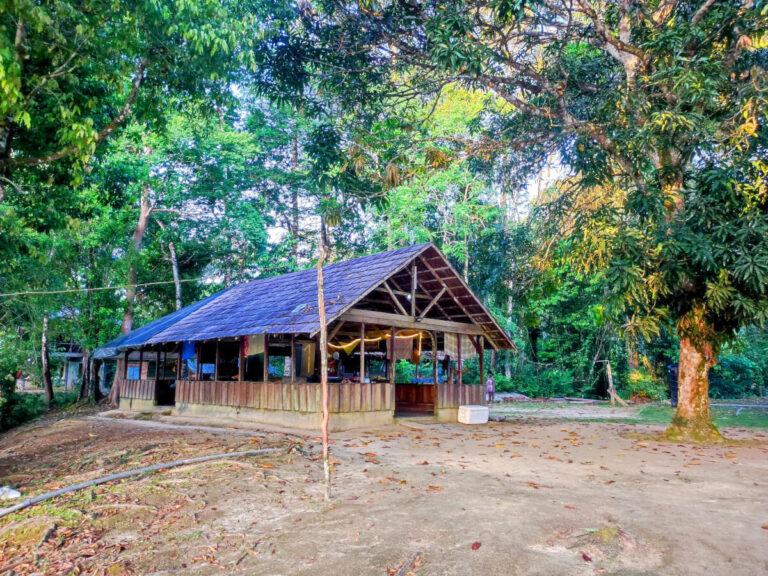
However, you must be willing to spend significant time researching how to arrive at the location, the accommodation, and the available infrastructure. A quick Google search won’t do in this case.
You’ll need to speak to locals to explain how to reach the destination best and get all the relevant information from the tour agency to weigh your pros and cons regarding whether to do the tour independently or not.
I went to Brownsberg Nature Park and spent five days there, paying 195 EUR for everything (return way to Brownsberg, accommodation, food for two people). Such a trip with a tour agency starts at 175 EUR for two days!
Read my detailed guide on going to Brownsberg Nature Park independently, with a clear cost breakdown and descriptions of everything to do.
Another solo trip was to visit a traditional Maroon Village. Tour agencies offer trips to Maroon villages, starting at 150 EUR. Again, I saved a lot of money by not booking a tour package with a tour agency and booking the accommodation straight with the resort’s owner in Ping Pe.
12. Be comfortable to travel uncomfortably
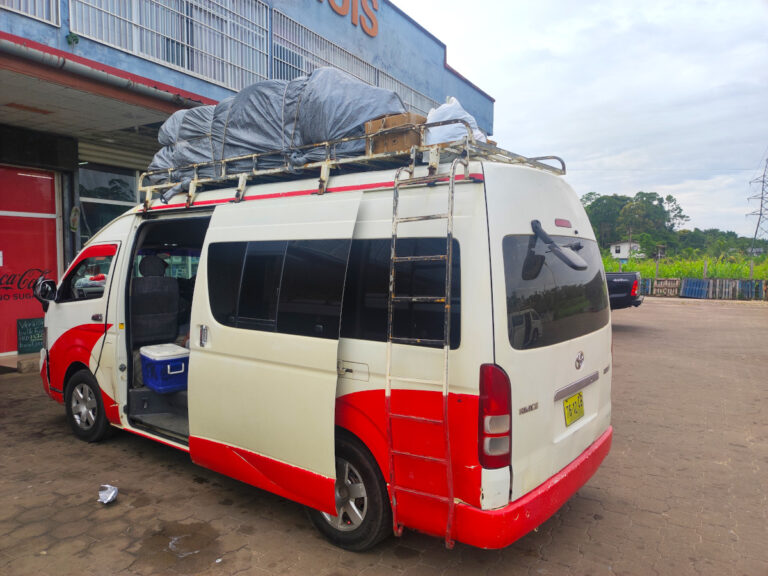
When the topic is transportation, one of the interesting facts about Suriname is that no reliable public transportation system exists.
Something like a city bus exists, but it’s always unclear whether or not that bus will depart that day. There are no trams, trains, or ride-sharing apps like UBER.
Surinamese people rely on privately run minibusses. The minibus business is booming due to the lack of available options. Usually, these minibuses can fit 15 people. They are highly crowded as the drivers try to earn as much money as possible from passengers. They’ll squeeze as many people as possible inside this bus.
I frequently traveled with these minibusses and saw it all: people bringing their pet monkeys with them and people seated on bags inside the small space between seats. Surinamese like to enjoy their lunch inside the minibus, so hopefully, you can handle the smell of the food.
I liked traveling with these minibusses because they gave me a more local experience and were cheaper. I paid 150SRD (3.5€) for a 2-hour trip from Paramaribo to Brownsweg.
If you consider renting a car, you will only get a little far. Driving by car is okay in and around Paramaribo. In a country mostly covered by rainforest, you won’t get far with a standard vehicle, and in most cases, you can’t use a car at all because traveling to some places is only possible by water.
You must travel using a canoe to reach some parts of Suriname and its attractions. When I tried to reach one of the Maroon villages, I knew that I could only get there by canoe, but I didn’t think that I would sit for 3 hours in the canoe under the open sun.
The canoe drivers maneuvered fast and elegantly between the huge rocks in the river. It was, at times, nerve-wracking but exciting and adventurous.
13. How to get around in Paramaribo
Paramaribo is a walkable city. It’s flat, and biking is common due to its Dutch influence. Many guest houses offer bicycle rentals. A comfortable way to get around is to use a taxi.
A trustworthy taxi service is Tourtonne Taxi. Type 1690 in Google and click on the first link. Enter your pick-up address there, and a taxi should pick you up soon. You can also call them (which works better for me) at 475734 / 425380.
They use a taximeter, so the price is fair, and you won’t have any problems. Another trustworthy taxi company is Hertog Taxi. You can reach them at 472 – 929. An application such as Uber or a local variant does not exist.
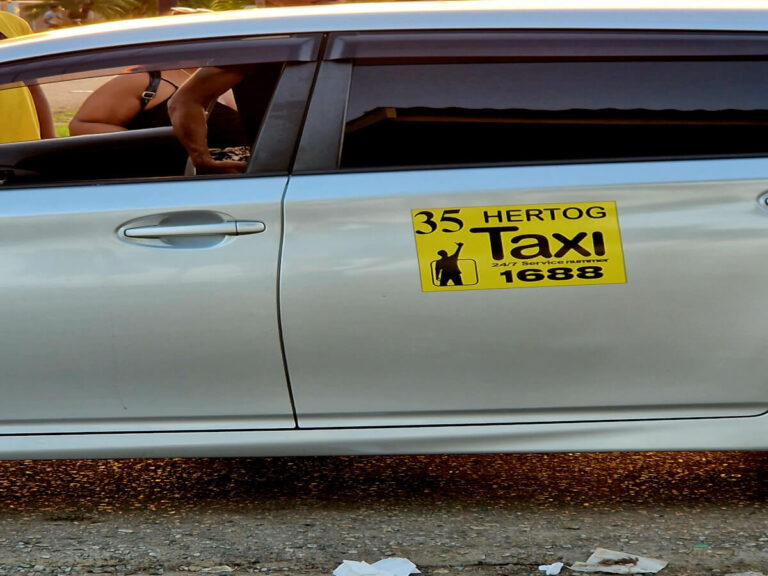
14. It's not a backpacker-friendly country
Accommodation and tour packages are not cheap. These are some interesting facts about Suriname for backpackers. You can find different prices, but the average room in Paramaribo is around 40 EUR per person. In fact, there is only one Hostel in Paramaribo—the Twenty4 Hostel. I stayed there for a few nights, and I recommend it.
Suriname’s natural charm lies in its interior, but many places are inaccessible, and there is simply no way to reach them independently. In most cases, this will leave you with no other option but to book a costly tour with a tour agency.
However, food is not too expensive. On average, I have paid 15-20 EUR for daily food, including lunch and dinner. Breakfast was included in the Twenty4 Hostel.
15. It's a country for adventure lovers
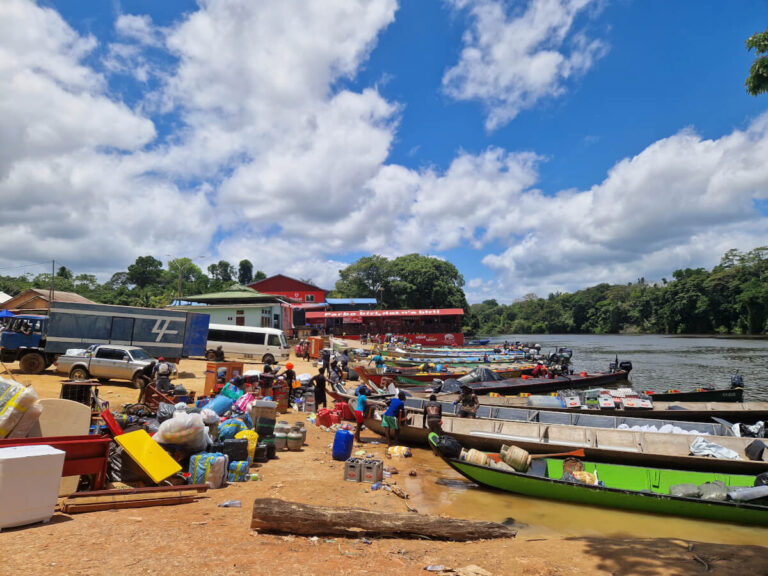
Suriname is one of the least traveled countries in the world. This fact alone makes it already the ultimate off-the-beaten-path destination.
The country’s lush rainforests make it a perfect destination for adventure seekers, ecotourists, and animal lovers. Many parts can only be accessed by canoe or boat rides.
The different ethnicities in Suriname have kept their ways of living, making it a unique feast for the eyes.
Despite being the smallest country in South America, Suriname is full of adventures to explore. As more people visit the country, the creation of more services and the development of infrastructure will likely increase with time.
Conclusion
I hope you found this list of interesting facts about Suriname helpful for your upcoming adventure.
It’s time to leave you with some food for thought about this exciting and undiscovered country!! Suriname is one of the most intriguing countries I have visited during my journey.
If you want more than interesting facts about Suriname, you can read a list of things to do here. It will help you better understand the types of activities available in the country.
See you all on the next adventure!! Bye!!

